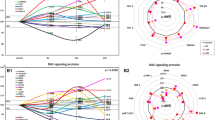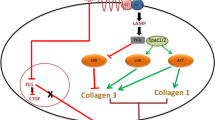Abstract
Wound healing is an important outcome of tissue damage and can be stimulated by adenosine released from cells during events such as tissue injury, ischaemia or tumour growth. The aim of this research was to determine the potency and efficacy of adenosine A1, A2A and A2B receptor agonists on the rate of wound healing and cell proliferation in human EA.hy926 endothelial cells. Real-time PCR data showed that only adenosine A1, A2A and A2B receptor mRNA were expressed in this cell line. All three adenosine receptor agonists, CPA, CGS21680 and NECA, significantly increased the rate of wound healing in human EAhy926 endothelial cells with the following order of potency CGS21680>CPA>NECA and efficacy CPA>NECA>CGS21680. The selective adenosine A1, A2A and A2B receptor antagonists, DPCPX, ZM241385 and MRS1754 (all at 10 nM), reversed the effects of their respective agonists. EAhy926 endothelial cell proliferation was also significantly increased with the adenosine A1 and A2B receptor agonists, CPA and NECA. Western blot analysis demonstrated that adenosine A2A and A1 receptor protein levels were highly expressed compared with the adenosine A2B receptors in the EAhy926 endothelial cell lines. While all three adenosine A1, A2A and A2B receptor subtypes contribute to cell proliferation and wound healing in human EAhy926 endothelial cells, treatments selectively targeting receptor subtypes may further enhance wound healing.





Similar content being viewed by others
References
Mubagwa K, Flameng W (2001) Adenosine, adenosine receptors and myocardial protection: an updated overview. Cardiovasc Res 52(1):25–39
Cronstein BN (2011) Adenosine receptors and fibrosis: a translational review. F1000 Biol Rep 3:21. https://doi.org/10.3410/B3-21
Fredholm BB (2010) Adenosine receptors as drug targets. Exp Cell Res 316(8):1284–1288. https://doi.org/10.1016/j.yexcr.2010.02.004
Andine P, Rudolphi KA, Fredholm BB, Hagberg H (1990) Effect of propentofylline (HWA 285) on extracellular purines and excitatory amino acids in CA1 of rat hippocampus during transient ischaemia. Br J Pharmacol 100(4):814–818
Borea PA, Gassi S, Merighi S, Varani K (2016) Adenosine as a multi-signalling guardian angel in human diseases: when, where and how does it exert protective effects? Trends Pharmacol Sci 37(6):419–434
Feoktistov I, Biaggioni I, Cronstein BN (2009) Adenosine receptors in wound healing, fibrosis and angiogenesis. Handb Exp Pharmacol 193:383–397. https://doi.org/10.1007/978-3-540-89615-9_13
Berne RM, Belardinelli L (1985) Effects of hypoxia and ischaemia on coronary vascular resistance, A-V node conduction and S-A node excitation. Acta Medica Scand Suppl 694:9–19
Gawlowski DM, Duran WN (1986) Dose-related effects of adenosine and bradykinin on microvascular permselectivity to macromolecules in the hamster-cheek pouch. Circ Res 58(3):348–355
Des Rosiers C, Nees S (1987) Functional evidence for the presence of adenosine A2-receptors in cultured coronary endothelial cells. Naunyn Schmiedeberg's Arch Pharmacol 336(1):94–98
Bache RJ, Dai XZ, Schwartz JS, Homans DC (1988) Role of adenosine in coronary vasodilation during exercise. Circ Res 62(4):846–853
Meininger CJ, Schelling ME, Granger HJ (1988) Adenosine and hypoxia stimulate proliferation and migration of endothelial-cells. Am J Phys 255(3):H554–H562
Sun LL, Xu LL, Nielsen TB, Rhee P, Burris D (1999) Cyclopentyladenosine improves cell proliferation, wound healing, and hair growth. J Surg Res 87(1):14–24. https://doi.org/10.1006/jsre.1999.5716
Dana A, Baxter GF, Walker JM, Yellon DM (1998) Prolonging the delayed phase of myocardial protection: repetitive adenosine A1 receptor activation maintains rabbit myocardium in a preconditioned state. J Am Coll Cardiol 31(5):1142–1149
Carr CS, Hill RJ, Masamune H, Kennedy SP, Knight DR, Tracey WR, Yellon DM (1997) Evidence for a role for both the adenosine A1 and A3 receptors in protection of isolated human atrial muscle against simulated ischaemia. Cardiovasc Res 36(1):52–59
Stambaugh K, Jacobson KA, Jiang JL, Liang BT (1997) A novel cardioprotective function of adenosine A1 and A3 receptors during prolonged simulated ischemia. Am J Phys 273(1 Pt 2):H501–H505
Casati C, Forlani A, Lozza G, Monopoli A (1997) Hemodynamic changes do not mediate the cardioprotection induced by the A1, adenosine receptor agonist CCPA in the rabbit. Pharmacol Res 35(1):51–55. https://doi.org/10.1006/phrs.1996.0114
Olanrewaju HA, Mustafa SJ (1996) Effects of adenosine analogues on tension and cytosolic Ca2+ in porcine coronary artery. Am J Phys 270(1 Pt 2):H134–H141
Hasko G, Szabo C, Nemeth ZH, Kvetan V, Pastores SM, Vizi ES (1996) Adenosine receptor agonists differentially regulate IL-10, TNF-alpha, and nitric oxide production in RAW 264.7 macrophages and in endotoxemic mice. J Immunol 157(10):4634–4640
Schaffer MR, Fuchs N, Proksch B, Bongartz M, Beiter T, Becker HD (1998) Tacrolimus impairs wound healing: a possible role of decreased nitric oxide synthesis. Transplantation 65(6):813–818
Wallace HJ, Stacey MC (1998) Levels of tumor necrosis factor-α (TNF-α) and soluble TNF receptors in chronic venous leg ulcers–correlations to healing status. J Investig Dermatol 110(3):292–296
Chesney J, Metz C, Stavitsky AB, Bacher M, Bucala R (1998) Regulated production of type I collagen and inflammatory cytokines by peripheral blood fibrocytes. J Immunol 160(1):419–425
Montesinos MC, Desai A, Chen JF, Yee H, Schwarzschild MA, Fink JS, Cronstein BN (2002) Adenosine promotes wound healing and mediates angiogenesis in response to tissue injury via occupancy of A(2A) receptors. Am J Pathol 160(6):2009–2018. https://doi.org/10.1016/s0002-9440(10)61151-0
Montesinos MC, Gadangi P, Longaker M, Sung J, Levine J, Nilsen D, Reibman J, Li M, Jiang CK, Hirschhorn R, Recht PA, Ostad E, Levin RI, Cronstein BN (1997) Wound healing is accelerated by agonists of adenosine A2 (G alpha s-linked) receptors. J Exp Med 186(9):1615–1620
Palmer TM, Gettys TW, Stiles GL (1995) Differential interaction with and regulation of multiple G-proteins by the rat A3 adenosine receptor. J Biol Chem 270(28):16895–16902
Klinger M, Freissmuth M, Nanoff C (2002) Adenosine receptors: G protein-mediated signalling and the role of accessory proteins. Cell Signal 14(2):99–108
Headrick JP, Peart J (2005) A3 adenosine receptor-mediated protection of the ischemic heart. Vasc Pharmacol 42(5–6):271–279. https://doi.org/10.1016/j.vph.2005.02.009
Feoktistov I, Ryzhov S, Goldstein AE, Biaggioni I (2003) Mast cell-mediated stimulation of angiogenesis: cooperative interaction between A2B and A3 adenosine receptors. Circ Res 92(5):485–492. https://doi.org/10.1161/01.RES.0000061572.10929.2D
Ansari HR, Nadeem A, Tilley SL, Mustafa SJ (2007) Involvement of COX-1 in A3 adenosine receptor-mediated contraction through endothelium in mice aorta. Am J Physiol Heart Circ Physiol 293:H3338–H3455
Zhao Z, Makaritsis K, Francis CE, Gavras H, Ravid K (2000) A role for the A3 adenosine receptor in determining tissue levels of cAMP and blood pressure: studies in knock-out mice. Biochim Biophys Acta 1500(3):280–290
Scientific T (2012) How to use a protein assay standard curve
Fredholm BB, AP IJ, Jacobson KA, Linden J, Muller CE (2011) International Union of Basic and Clinical Pharmacology. LXXXI. Nomenclature and classification of adenosine receptors--an update. Pharmacol Rev 63(1):1–34. https://doi.org/10.1124/pr.110.003285
Bouis D, Hospers GA, Meijer C, Molema G, Mulder NH (2001) Endothelium in vitro: a review of human vascular endothelial cell lines for blood vessel-related research. Angiogenesis 4(2):91–102
Edgell CJ, Haizlip JE, Bagnell CR, Packenham JP, Harrison P, Wilbourn B, Madden VJ (1990) Endothelium specific Weibel-Palade bodies in a continuous human cell line, EA.hy926. In Vitro Cell Dev Biol 26(12):1167–1172
Edgell CJ, McDonald CC, Graham JB (1983) Permanent cell line expressing human factor VIII-related antigen established by hybridization. Proc Natl Acad Sci U S A 80(12):3734–3737
Ethier MF, Chander V, Dobson JG Jr (1993) Adenosine stimulates proliferation of human endothelial cells in culture. Am J Phys 265(1 Pt 2):H131–H138
Ethier MF, Dobson JG Jr (1997) Adenosine stimulation of DNA synthesis in human endothelial cells. Am J Phys 272(3 Pt 2):H1470–H1479
Fredholm BB, AP IJ, Jacobson KA, Klotz KN, Linden J (2001) International Union of Pharmacology. XXV. Nomenclature and classification of adenosine receptors. Pharmacol Rev 53(4):527–552
Feoktistov I, Goldstein AE, Ryzhov S, Zeng D, Belardinelli L, Voyno-Yasenetskaya T, Biaggioni I (2002) Differential expression of adenosine receptors in human endothelial cells: role of A2B receptors in angiogenic factor regulation. Circ Res 90(5):531–538
Kim Y-C, Ji X-D, Melman N, Linden J, Jacobson KA (2000) Anilide derivatives of an 8-phenylxanthine carboxylic congener are highly potent and selective antagonists at human A2B adenosine receptors. J Med Chem 43:1165–1172
Baraldi PG, Tabrizi MA, Fruttarolo F, Romagnoli R, Preti D (2009) Recent improvements in the development of A2B adenosine receptor agonists. Purinergic Signal 5:3–19
Richter A, Hamann M (2001) Effects of adenosine receptor agonists and antagonists in a genetic animal model of primary paroxysmal dystonia. Br J Pharmacol 134(2):343–352. https://doi.org/10.1038/sj.bjp.0704268
Jonzon B, Nilsson J, Fredholm BB (1985) Adenosine receptor-mediated changes in cyclic AMP production and DNA synthesis in cultured arterial smooth muscle cells. J Cell Physiol 124(3):451–456. https://doi.org/10.1002/jcp.1041240314
Shaikh G, Cronstein B (2016) Signaling pathways involving adenosine A2A and A2B receptors in wound healing and fibrosis. Purinergic Signal 12(2):191–197. https://doi.org/10.1007/s11302-016-9498-3
Grant MB, Davis MI, Caballero S, Feoktistov I, Biaggioni I, Belardinelli L (2001) Proliferation, migration, and ERK activation in human retinal endothelial cells through A(2B) adenosine receptor stimulation. Invest Ophthalmol Vis Sci 42(9):2068–2073
Olanrewaju HA, Qin W, Feoktistov I, Scemama JL, Mustafa SJ (2000) Adenosine A(2A) and A(2B) receptors in cultured human and porcine coronary artery endothelial cells. Am J Phys Heart Circ Phys 279(2):H650–H656
Fischer S, Sharma HS, Karliczek GF, Schaper W (1995) Expression of vascular permeability factor/vascular endothelial growth factor in pig cerebral microvascular endothelial cells and its upregulation by adenosine. Brain Res Mol Brain Res 28(1):141–148
Grant MB, Tarnuzzer RW, Caballero S, Ozeck MJ, Davis MI, Spoerri PE, Feoktistov I, Biaggioni I, Shryock JC, Belardinelli L (1999) Adenosine receptor activation induces vascular endothelial growth factor in human retinal endothelial cells. Circ Res 85(8):699–706
Acknowledgements
The EA.hy926 endothelial cell line used for these studies was generously donated to our research group by the Apoptosis Research Group, Griffith University, Gold Coast campus.
Author information
Authors and Affiliations
Corresponding author
Ethics declarations
Conflicts of interest
Zeinab Bonyanian declares that he has no conflict of interest.
Matthew Walker declares that he has no conflict of interest.
Eugene Du Toit declares that he has no conflict of interest.
Roselyn B. Rose’Meyer declares that she has no conflict of interest.
Ethical approval
This article does not contain any studies with human participants or animals performed by any of the authors.
Additional information
Publisher’s note
Springer Nature remains neutral with regard to jurisdictional claims in published maps and institutional affiliations.
Electronic supplementary material
ESM 1
(DOCX 198 kb)
Rights and permissions
About this article
Cite this article
Bonyanian, Z., Walker, M., Du Toit, E. et al. Multiple adenosine receptor subtypes stimulate wound healing in human EA.hy926 endothelial cells. Purinergic Signalling 15, 357–366 (2019). https://doi.org/10.1007/s11302-019-09668-z
Received:
Accepted:
Published:
Issue Date:
DOI: https://doi.org/10.1007/s11302-019-09668-z




